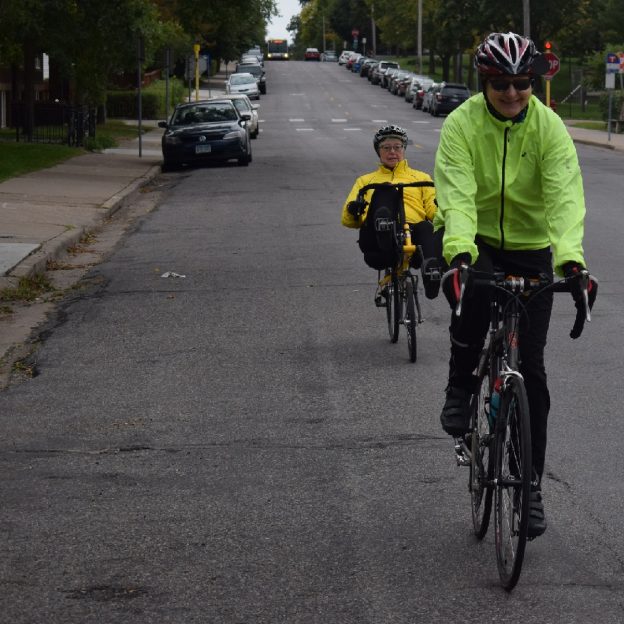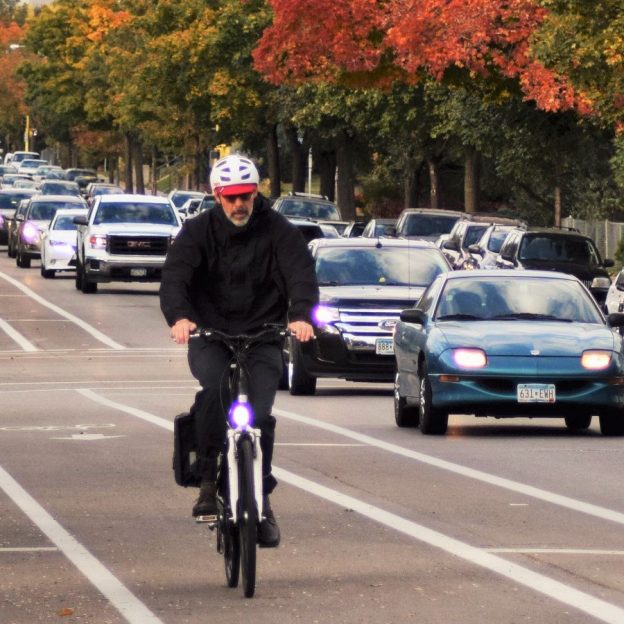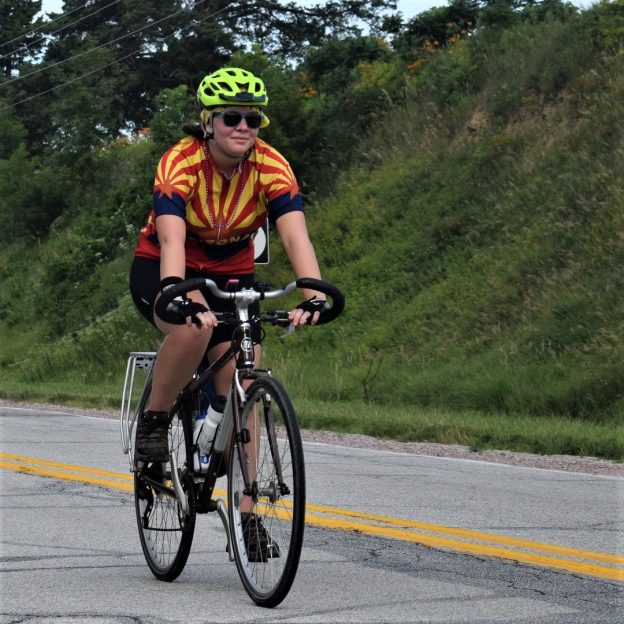Tag: reflective clothing
-

Bike Pic Oct 29, bright clothing adds to a comfortable ride!
This cool-weather Wednesday, bright clothing adds to a comfortable ride!
-

Added visibility for safety and fun in fall’s limited light
Now that fall is just around the corner and the days are getting shorter, we must consider visibility while staying active amongst the autumn colors. As the leaves change and then drop, we need to focus on passive and active visibility. Features like reflectors and bright colors are passive forms of visibility, whereas lights and blinkers are…
-

Being visible and noticed doesn’t end when the sun comes up
Now with spring riding soon in full swing, stay visible and noticed. Wear clothing that makes you stand out to others while riding your bike or walking. Being noticed by others is the key to avoiding accidents. Focus on the two forms, passive and active visibility, to help stay safe. Things like reflectors and bright…
-

Add visibility in fall’s limited light for a memorable ride.
With fall session riding in full swing, using passively bright gear is a critical component to being better seen while riding our bikes. The two primary forms of visibility we need to focus on are passive and active visibility. Things like reflectors and bright colors are forms of passive visibility. In contrast, lights and blinkers…
